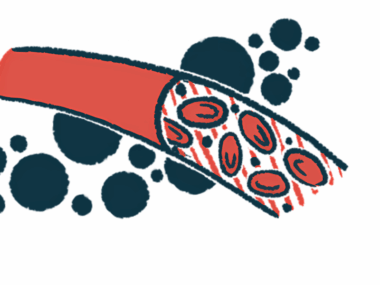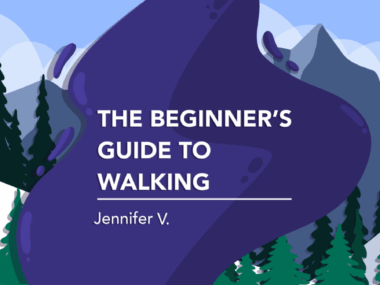Overcoming Addiction but Still Struggling With NMO Pain
Why columnist Jennifer van Amerom finally broke the cycle of opioid dependence
Written by |

On a recent overnight trip, my family used a couple of pieces of our luggage set. My husband, Mike, reached into one of the side pockets and retrieved something that shocked him.
“What’s this?!” His bewildered look told me he already knew, but he wanted my acknowledgment.
I immediately recognized the small, blue pill in the palm of his hand. The distinctive “15” stamped on its side. If the oxycodone pill, with its slow release and powerful punch, could say anything, it would whisper my name.
You see, I was an addict.
It has taken me a couple of years to acknowledge this, but I now know it’s true. It wasn’t my fault, nor do I blame the prescribing doctors. They were just trying to help. It’s this brutal neurological disease I have, neuromyelitis optica (NMO), that forced me into an endless cycle of medication abuse. It’s tough to admit that I am one of the people who need heavy pain medication to manage a typical day.
Admitting my truth
I’m a little terrified to label myself a recovered addict for several reasons. Firstly, I still take a lot of medication that my body needs. Without it, I fall apart and go into withdrawal — which is exactly how addicts feel. But I never sourced illegal drugs. My doctors prescribed as much oxycodone as I needed for almost 10 years. They were my one and only source.
Additionally, our society lacks understanding about addiction and doesn’t provide much support to those struggling. Many people are quick to judge. It’s scary to admit that I was an addict on the internet, as it will no doubt live in the online realm forever.
The reality of addiction
Many people think of addicts as people who are homeless and act incoherently. No one ever suspects someone like me — a working professional, wife, mother, and advocate — of needing powerful drugs. And if they do, they allow it because of my condition.
I’ve written before about how oxycodone affected my life, but I wrote that piece from a place of needing to manage my daily pain. I still think it’s unfair to paint oxycodone patients and substance abusers with the same brush; however, now that I’ve been off this addictive drug for over two years, I have the clarity to recognize how unhealthy it made me feel. I dreaded the withdrawal symptoms, which forced me to have medication accessible at all times. It’s why I often kept an extra pill in my handbag or luggage.
Self-sabotage
I still live with constant NMO pain; in many ways, it’s worse now. What’s different is that I’m doing what I can to manage my pain without adding the complex cravings of addiction.
While I’m no longer taking oxycodone, I now take Suboxone (buprenorphine/naloxone), one of the main drugs used to treat opioid addiction. While Suboxone also can be potentially addicting, I’m on such a low dose that I can start and stop the drug as needed for pain management. I couldn’t have done that with oxycodone.
After almost 13 years of living with NMO, I feel like I finally have some control over my drug intake. For the longest time, I was caught in a cycle of self-sabotage, possibly compromising my existence. I now need medication to manage my condition, but I still worry about the cost.
In addition to oxycodone, I’ve tried many different treatments over the years, all recommended by my specialists. These included Solu-Medrol (methylprednisolone sodium succinate), Imuran (azathioprine), CellCept (mycophenolate mofetil), Enspryng (satralizumab-mwge), morphine, and even cannabis.
How have all these medications affected my organs, mental health, and life span?
Moving forward
I recommend all NMO patients work with a pain management clinic, but with this caveat: In my experience, nothing compares to highly addictive painkillers. If you decide to stop using opioids after consulting with your medical team, know you’ll have to develop a new norm — one that may involve a more painful daily existence. The benefit is moving away from a cycle of dependence that can potentially keep escalating.
Note: Neuromyelitis News is strictly a news and information website about the disease. It does not provide medical advice, diagnosis, or treatment. This content is not intended to be a substitute for professional medical advice, diagnosis, or treatment. Always seek the advice of your physician or other qualified health providers with any questions you may have regarding a medical condition. Never disregard professional medical advice or delay in seeking it because of something you have read on this website. The opinions expressed in this column are not those of Neuromyelitis News or its parent company, Bionews, and are intended to spark discussion about issues pertaining to neuromyelitis optica spectrum disorder (NMOSD).







Leave a comment
Fill in the required fields to post. Your email address will not be published.